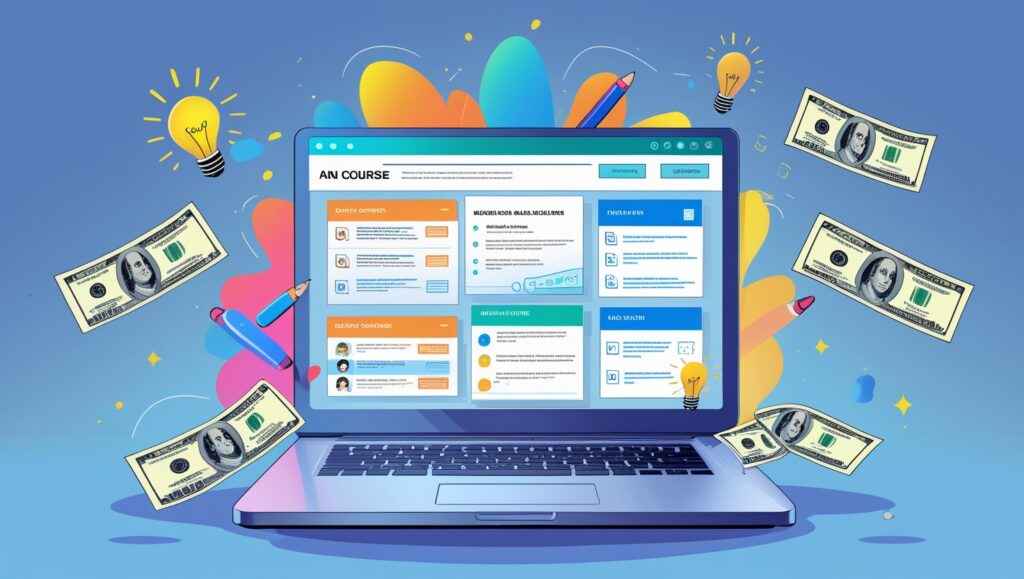Creating and Selling Online Courses: A Step-by-Step Guide

The online education market is booming, and there’s never been a better time to create and sell your own online course. Whether you are an expert in a particular subject, a hobbyist with valuable skills, or a professional looking to diversify your income, online courses can provide a steady stream of revenue while helping others learn. This guide walks you through the entire process, from ideation to launching and marketing your course.
Step 1: Identify Your Niche and Audience
The first and most crucial step is identifying a profitable niche. Choose a topic you are passionate about and have expertise in. Consider what problems or skills people need to solve or acquire. Conduct market research to ensure there is a demand for your course idea. Survey potential students, check forums, and analyze competitors to refine your topic.
Key Questions to Ask:
- What are you knowledgeable about?
- Who is your target audience?
- What problems can you help solve?
- Are people willing to pay for this knowledge?
Step 2: Validate Your Course Idea
Before investing significant time in creating the course, validate your idea. This can save you time and money by ensuring there is interest. Create a lead magnet (such as a free eBook, webinar, or mini-course) and see how many people sign up. You can also pre-sell your course at a discounted rate to gauge interest.
Step 3: Plan Your Course Content
Outline the structure of your course by breaking it down into modules and lessons. Plan a logical progression that helps students achieve a desired result by the end of the course. Consider different formats such as video lessons, written content, quizzes, and assignments to keep learners engaged.
Tips for Planning:
- Define learning objectives for each module.
- Create a roadmap or course syllabus.
- Include actionable tasks or activities.
- Use multimedia to enhance engagement.
Step 4: Choose Your Course Platform
Decide where to host your course. There are various platforms available, each with its pros and cons. Some popular platforms include:
- Teachable – Easy to use, great for beginners.
- Thinkific – Customizable with a free plan available.
- Udemy – Large user base but lower profit margins.
- Podia – All-in-one platform with marketing tools.
- Kajabi – Comprehensive but pricier.
Alternatively, you can host your course on your own website using plugins like LearnDash or Tutor LMS.

Step 5: Create High-Quality Content
Invest time in producing high-quality, engaging content. Use professional equipment for video and audio recording, or hire freelancers if necessary. Ensure your content is visually appealing, well-structured, and easy to follow.
Tools to Consider:
- Video Editing: Adobe Premiere Pro, Camtasia
- Audio Recording: Audacity, GarageBand
- Graphic Design: Canva, Adobe Photoshop
Step 6: Price Your Course
Pricing your course can be tricky. Consider the value of the knowledge you are providing, competitor pricing, and the financial capacity of your target audience. You can choose from several pricing models:
- One-time Fee – A single upfront payment.
- Subscription – Recurring payments for continued access.
- Payment Plans – Multiple smaller payments.
- Freemium – Offer basic content for free, with premium modules available at a cost.
Step 7: Build an Audience
A strong audience is essential for course sales. Start building your audience early by creating valuable content through blogs, social media, YouTube, or podcasts. Engage with your community and provide free resources to build trust.
Step 8: Launch and Market Your Course
Once your course is ready, launch it to your audience. Create a launch plan that includes email marketing, social media campaigns, and collaborations with influencers. Offer limited-time discounts or bonuses to create urgency.
Marketing Strategies:
- Run paid ads on Facebook, Google, and LinkedIn.
- Leverage email marketing.
- Partner with affiliates or influencers.
- Host webinars or live Q&A sessions.
Step 9: Collect Feedback and Improve
After launching, collect feedback from your students. Use their input to refine and improve your course. Continuous improvement will help you keep your course relevant and increase sales over time.
Step 10: Scale and Expand
Once your course gains traction, consider expanding your offerings. Create additional courses, develop a membership site, or bundle courses together. This will help you scale your business and boost long-term revenue.
Final Thoughts

Creating and selling online courses can be a rewarding and profitable endeavor. By following these steps and continuously learning and adapting, you can build a successful online education business that benefits both you and your students. Start today and turn your expertise into an impactful and scalable product.






